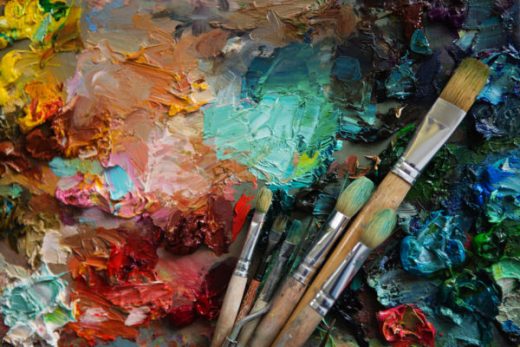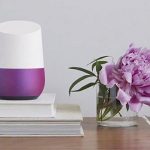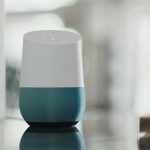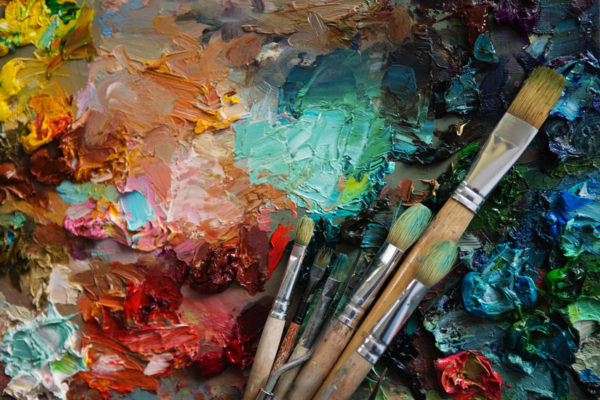Is art the next frontier in the IoT revolution?
Is art the next frontier in the IoT revolution?

The Internet is a tool of connection. We share photos, videos, ideas—all at the click of a button, or the tap of a screen. The Internet of Things (IoT) revolution has further transformed our lives, allowing our devices to fully integrate with our world in ways unimaginable even five years ago. The very concept of IoT has even forced us to rethink traditionally staid cultural mores. In the last few years, the art world has seen an immense impact as a result of this trend. However, its prevalence remains under the radar.
We all know about the conveniences of IoT devices—Nest’s popular Wi-Fi thermostat comes to mind, a tool that can learn about its users habits and program your home’s temperature accordingly. The world is now awash in items that perform various functions using a similar concept.
Leveraging smart homes for art’s sake
These interconnected and interactive gadgets have helped make “smart homes” a reality. But in the process, they’ve become little more than the sum of their parts. They certainly have great utilitarian use, but the vast majority of them have done little to add value beyond that. This reality has created a bit of a tech overload, with multiple products competing for attention, seemingly tripping over themselves in the process. The clutter effect is palpably felt, and has led some users to doubt whether a bit of added convenience is really worth the costs.
See also: How 5 artists use Pinterest
Thankfully, this is not the case with all aspects of connected tech. While most devices, as previously mentioned, seek to create a hive mind among the various wearables and gadgets that incessantly pervade our daily lives, there has been a thriving subculture of technologists, designers, architects, and more that have uncovered a wealth of opportunity to subvert the traditional artistic approach by integrating IoT very carefully into their work. These groups have set out to make IoT more than a robotic afterthought, and instead infuse it with same warmth and emotion that permeates the great artistic masterpieces from the past and present.
There are tons of examples of innovative takes by way of intricately developed installations that use technology to create all sorts of wonders—everything from weather simulations, proximity-based interactive lighting structures, and pieces that react through sensors to the changing conditions of the sea via connected buoys. In each of these cases, the masterminds behind each installation used sensors as the proverbial ‘paint brush’ for their creations.
Art adds a deep, personal touch to otherwise cold tech
Art has effectively added a deep and intimate personal touch to the tech world—one that has largely been lacking. With the advent of IoT, people have the ability to customize and express themselves in brand new ways, all the while being enabled by intuitive new products that allow us experience the world with unique perspectives. Like the IoT revolution, art is an examination and reassessment of the space we inhabit triggered by an intense emotional reaction to the creations in front of us. This makes the marriage of the two concepts inherently natural and organic.
Already, products like Lightswarm have become integrated into homes. Lightswarm tracks the movements of people in a room and adjusts the lighting to match where they are and what time of day it is; it is both useful while also adding to the ambience of the environment. The concept has been adapted to various other fixtures, both for private homes, as well as public spaces. These pieces of technology, while utilitarian on the surface, actually hide a creative subtext beneath their layers, which makes them aesthetically pleasing, as well as fundamentally functional.
Of course, the intersection of art and technology goes much further than just simple lighting. It has also radically democratized the nature of the art world itself. Years ago, you needed to live near a big city to be able to explore visual culture through museums or galleries. That paradigm has greatly shifted as people now have the ability to view and appreciate art from anywhere, sometimes with just a few taps on their phone, or by exploring art in 360 degrees through Google cardboard.
It doesn’t stop there.
Google is also adapting the IoT revolution to give people the chance to create artistic works in a whole new plane of “reality” through the Google Tilt Brush, which will effectively make it possible to render the entire concept of a dedicated studio space as obsolete. Virtual reality will be the prospective artist’s new canvas. These are perfect examples of innovations that can break down the barriers to accessibility and understanding of art while making the world at large your studio.
Ultimately, art has brought a much-needed breath of fresh air to the IoT revolution—one that’s all too often hidden from the spotlight. Connected technology shouldn’t just be about convenience or fulfilling a certain task, not when it’s possible to rise above utility and make it an integral part of the human experience. Art has always occupied that space, but as it continues to exist hand-in-hand with technology, the door is always open for pushing the envelope and tapping into a part of the human condition that, as a result of the digital age, might have become buried within us over time.
The author is the co-founder and CEO of Meural, a digital art company.
The post Is art the next frontier in the IoT revolution? appeared first on ReadWrite.
(20)














